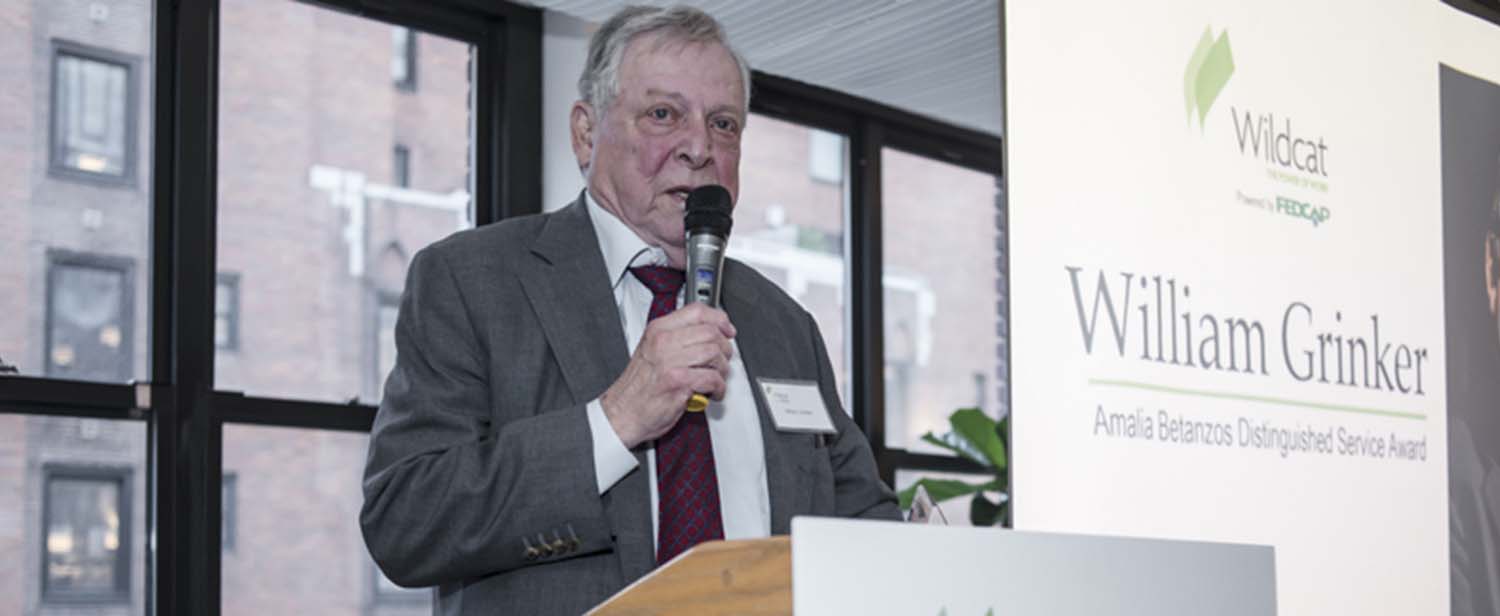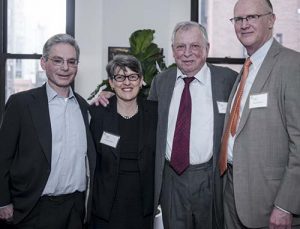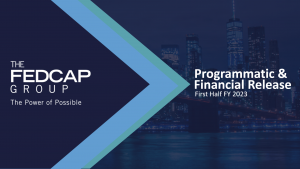Newly Created Heckscher Foundation Workforce Development Grants Aim to Create More Than 1,100 Full-Time Jobs in New York

$7.6 Million in Grants Will Support Innovative Hiring Programs for State’s Underserved Youth
New York, NY—July 19, 2023—The Heckscher Foundation for Children today announced the launch of a first-of-its-kind workforce development program intended to create more than 1,100 full-time jobs for underserved young adults in New York State. The Heckscher Foundation Challenge is providing $7.6 million in grant funding to 20 colleges, community-based organizations, and one high school that have partnered with employers to train, mentor and provide full-time jobs to underprivileged youth. Young adults under the age of 25 participating in the programs will develop the necessary skills and receive the training required for success in today’s workforce.
The Heckscher Foundation’s unique initiative is a transformative grant model for work readiness and job placement programs. It differs from traditional models because a full-time job commitment from the employer partner is required to be considered for grant funding. This new initiative will provide job seekers with a clear path to a meaningful career – and offer a critical solution to ongoing workforce shortages.
“Traditional models for philanthropic workforce development have remained stagnant for decades, failing to produce adequate full-time job opportunities for the communities that need them the most,” said Peter Sloane, CEO of the Heckscher Foundation. “With an ongoing labor shortage, our new initiative comes at a critical time and serves as a model for shifting the paradigm of workforce development programming. We applaud our grantees and employer partners who are giving these young people a chance at a lifelong career, and we hope the initiative inspires others to adopt our approach of creating alternative paths to full-time employment.”
The 20 grantees working with dozens of employer partners across New York State are as follows:
● Commonpoint Queens is partnering with employers including SC Prime Energy LTD and Cosan Construction.
● Covenant House is partnering with employers including Delta and Hard Rock International.
● CUNY Borough of Manhattan Community College is partnering with employers including Phoenix House.
● CUNY New York Early Childhood Professional Development Institute is partnering with employers including Young Minds in Motion and Brooklyn Kindergarten Society.
● CUNY Queensborough Community College is partnering with employers including Next Solutions, ACS Networking, Clearcom Wireless Services, LLC, Hugh O’Kane Electric Company Inc, KT&G Construction Inc and InRange Solutions.
● Drive Change is partnering with employers including Café Panna, Crafted Hospitality, and Marlow Collective.
● East Side House is partnering with employers including New York Presbyterian Hospital.
● Henry Street Settlement is partnering with employers including Climatec and Dual Fuel Corp.
● Hot Bread Kitchen is partnering with employers including Eataly and Restaurant Associates.
● Jewish Community Center of Staten Island is partnering with employers including D’Onofrio General Contracting Corp.
● NPower is partnering with employers including NYC Hall of Science.
● Reel Works is partnering with employers including Paramount, Jigsaw Productions, Harbor Picture Company, and A+E Television Networks LLC.
● Say Yes Buffalo Scholarship is partnering with employers including The Buffalo News, M&T Bank, Wegmans, and Delaware North.
● St. Nicks Alliance is partnering with employers including Asian Americans for Equality and Star Hospitality Group.
● SUNY Cobleskill is partnering with employers including Montefiore Medical Center and Memorial Sloan Kettering Cancer Center.
● SUNY Delhi is partnering with employers including JBT Corporation.
● SUNY Genesee Community College is partnering with employers including Edwards Vacuums and Amanda Tool America.
● The Door is partnering with employers including Cava and Dig.
● Thomas A. Edison Career and Technical Education High School is partnering with employers including Penske and Donnelly Mechanical.
● Wildcat Service Corporation is partnering with employer Brooklyn SolarWorks.
“For years, New York State has lacked a workforce development program that taught students the skills needed to succeed in the wireless and telecom industries,” said Thomas Marciano, Board Member and Co-Chair of the Workforce Development Committee at the New York State Wireless Association (NYSWA), a trade organization representing employers. “By providing this grant, the Heckscher Foundation for Children has stepped in to fill a significant void, enabling educators and employers to meet industry needs. NYSWA is grateful to the Heckscher Foundation for this work readiness funding, which gives students new opportunities to be a part of a diverse and qualified workforce.”
“The number one challenge for workforce development programs is aligning student skills with the businesses’ needs. Without this alignment, students need to be retrained, increasing the program’s cost,” said Moses Ojeda, Principal of Thomas A. Edison Career and Technical Education High School. “But thanks to work readiness funding through our grant from the Heckscher Foundation, our employer partners know that Thomas Edison students graduate with the specific career and technical skills they need to succeed. The Heckscher Foundation for Children is rethinking workforce development, and our aspiring students and employers across the state will reap the rewards.”
“Young people involved with the legal system often experience tremendous difficulty finding stable employment due to lack of support and employer prejudice,” said Kalilah Moon, Executive Director of Drive Change, a nonprofit providing hospitality industry training for formerly incarcerated youth. “For years, Drive Change has been working to correct that by providing our fellows with the skills they need to succeed in the hospitality industry, but we can’t do it alone. Thanks to work readiness funding through the Heckscher Foundation Challenge, we can help many more fellows rebuild their lives, beginning with long-term, secure employment.”
“Queensborough Community College’s Computer Engineering Technology program gives our students a solid foundation that prepares them for today’s workforce,” Queensborough Community College President Christine Mangino said. “We are thrilled to partner with the Heckscher Foundation, which requires us to bring our employer partners in at the onset to both align our curriculum to employer needs and commit to hiring our students for full-time employment. It is a true collaboration.”
“Reel Works is honored and thrilled to partner with the Heckscher Foundation for Children on this exciting challenge to create pathways to careers in media for underrepresented New Yorkers,” said Keisha Katz, Director of Workforce and External Partnerships at Reel Works. “We know from over 20 years of experience training young filmmakers that talent and ability know no zip code, and we are proud to work with visionary companies like Paramount, A+E Networks, Jigsaw Productions, and Harbor to create paid apprenticeships for in-demand skills in film and television post-production. Our MediaMKRS program is centered on the conviction that when employers, educators, and philanthropists collaborate, we can address the crisis of inclusion in the entertainment industry by providing paid work-based-learning apprenticeships that lead to jobs with family-sustaining wages and opportunities for advancement.”
In January, the Heckscher Foundation began requesting grant proposals from New York high schools, colleges, and community-based organizations to address the serious misalignment between the skills of unemployed individuals and the surplus of available jobs in New York. Initially, the Heckscher Foundation intended to provide $3 million in grant funding, but an unprecedented interest from the community resulted in nearly 100 submitted applications. To meet the demand, the Heckscher Foundation increased available funding to $7.6 million.
The Heckscher Foundation awarded grants to organizations that are providing targeted training and partnering with employers committed to hiring based on strict guidelines, training milestones, skill mastery, and data-driven information on performance. Heckscher did not accept applications offering only internships or part-time employment to ensure the program created full-time job opportunities for young adults who want to pursue a meaningful career and achieve financial stability.
Participating employers represent various industry sectors, including hospitality, technology, construction, manufacturing, renewable energy and healthcare. Youth benefiting from the programs include those who are out of school, out of work, graduates from high school and college, and those with involvement in the legal and foster care systems. The program duration for the cohorts will be over a two-year time period.
###
About the Heckscher Foundation for Children
The Heckscher Foundation for Children uses venture philanthropy to fund innovative, results-driven programs and partnerships that level the playing field for underserved youth. Its grants focus primarily on education, including college access and persistence, workforce training and jobs access, and arts education that improves achievement in the classroom. Learn more at heckscherfoundation.org.
Contacts:
Heckscher Foundation: Heckscher@skdknick.com
The Fedcap Group/Wildcat Service Corporation:
Susan Walsh
swalsh@fedcap.org









 “Bill was a tremendous asset to The Fedcap Group. He helped us with various combinations, provided guidance as we worked to establish a community development financial institution, assisted us in designing our interventions at Rikers and our efforts to help youth in foster care enter college and graduate. Bill was also our brain trust as we strategized around international growth and program expansion,” said Christine McMahon, President and CEO of The Fedcap Group. “He was my dear friend and confidant, and I will miss him a great deal.”
“Bill was a tremendous asset to The Fedcap Group. He helped us with various combinations, provided guidance as we worked to establish a community development financial institution, assisted us in designing our interventions at Rikers and our efforts to help youth in foster care enter college and graduate. Bill was also our brain trust as we strategized around international growth and program expansion,” said Christine McMahon, President and CEO of The Fedcap Group. “He was my dear friend and confidant, and I will miss him a great deal.”









